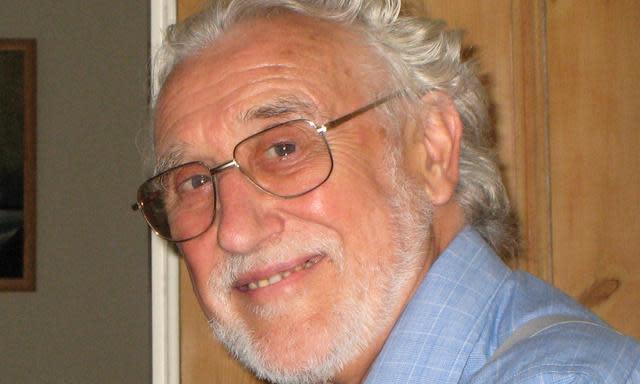Peter Richards obituary

The role of the local authority conservation officer is much misunderstood and maligned. My father, Peter Richards, who has died aged 94, did much to place the discipline on a proper professional footing and demonstrate what it could achieve. He headed a multidisciplinary team at Essex county council from 1974 to 1994 and led the restoration of important historic buildings and their gardens for public use, such as the Grade-I medieval barns at Cressing Temple near Witham – one of which is believed to be the oldest standing timber-framed barn in the world – and Copped Hall, Epping.
Peter combined sound conservation principles, a pragmatic approach and personal integrity. He was a founder member in 1982 of the Association of Conservation Officers, which in 1995 became the Institute of Historic Buildings and Conservation. Peter was aware that this was a young profession and was very supportive of younger officers who looked on him a role model. He also served on English Heritage’s historic building committee for six years.
He was not afraid to fight a difficult cause, as he showed when supporting legal action in 1995 against the Conservative MP Teresa Gorman, who undertook work on her listed house without permission. He persuaded the Conservative-led Essex council to support Thurrock council (then Labour) in pursuing their local MP, a case which ended with Gorman losing and being fined.
In the 1960s and early 70s, Peter worked in Southend borough architects department at an exciting time of municipal confidence and public expenditure. He worked on Southend’s civic centre (opened in 1967), a new health centre and the pedestrianisation of Southend High Street.
Peter was born in Smethwick and grew up in Worcester, the only son of Charles, a local businessman and election agent for the Liberal party, and Edith (nee Fieldhouse). He won a scholarship to the King’s school, Worcester, but his further education at the Birmingham School of Architecture was interrupted by national service in Egypt (1947-49). He resumed his architectural studies while working as a draftsman, achieving his full RIBA qualifications in 1957.
He married Wendy (then know as Joan) Brooks, from Southend-on-Sea, in 1952 – they had been teenage pen-friends – and they had three children, Paul, Sam and Ruth. Wendy died in 2012 from dementia. Peter was her carer throughout her illness.
In the early years of their marriage they lived in Tempsford, Bedfordshire, and on a wet night in 1955 they invited two rain-soaked hitchhikers into their home to dry out. They were Bradford Art School students, David Hockney and Norman Stevens, travelling to London for an exhibition. Both would become regular overnight guests in Tempsford, a convenient hitchhiking stopover, and made artworks for Peter and Wendy as marks of their friendship. Hockney sent them a 60th wedding anniversary card from his iPad.
Following his retirement in 1994, Peter served on the Copped Hall Trust and as chairman of the Chelmsford Diocesan advisory committee for six years. He was a great fan of jazz, amassing a collection of thousands of records and CDs, and from 2018, wrote prolifically for an online jazz magazine.
Peter is survived by his second wife, Ann Husselbee, whom he married in 2019; and by his three children, three granddaughters, Sadie, Grace and Alice, and two great-granddaughters, Imogen and Ada.

 Yahoo News
Yahoo News 
